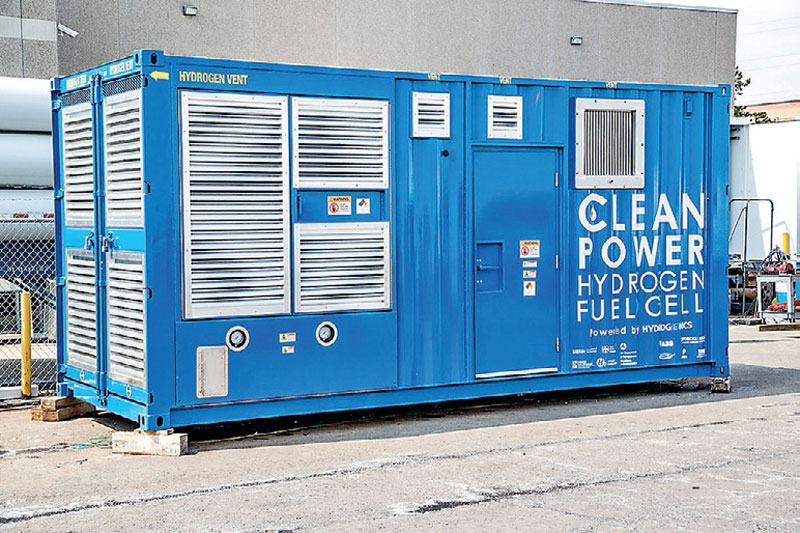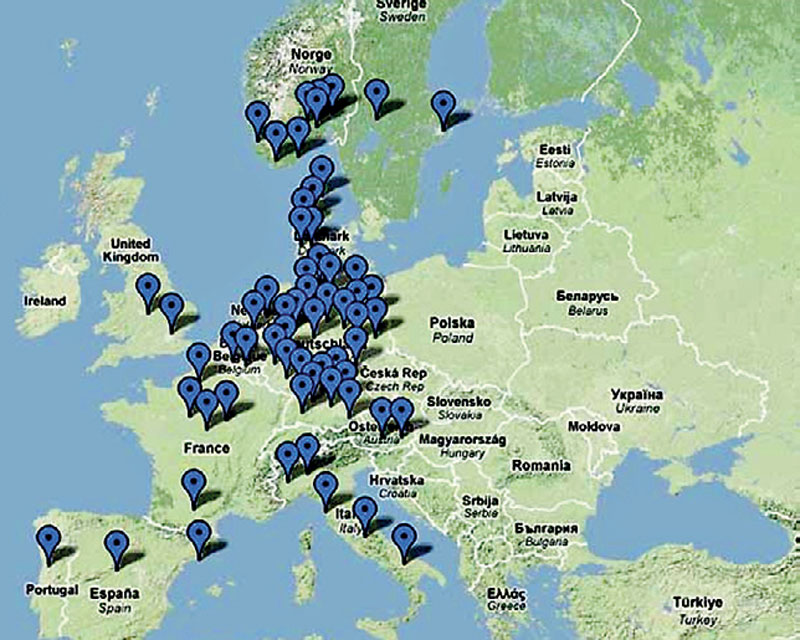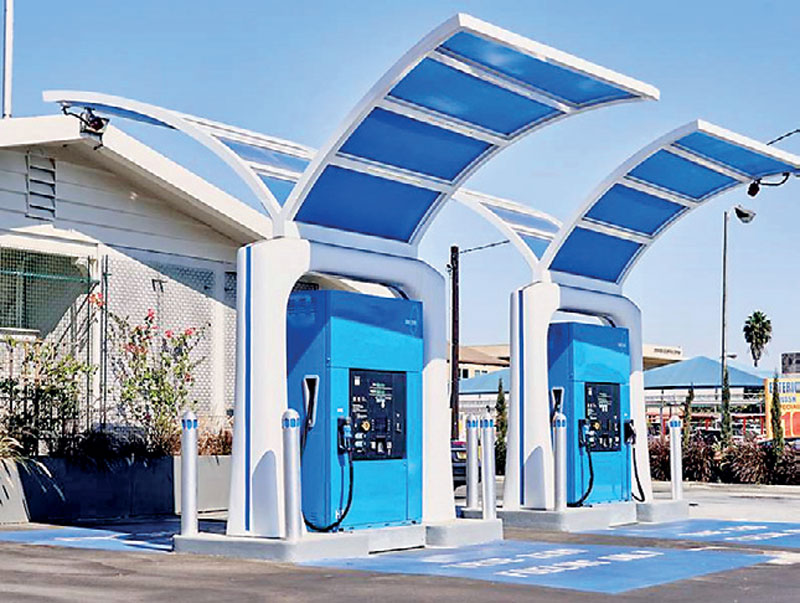Tuesday Jan 13, 2026
Tuesday Jan 13, 2026
Tuesday, 2 August 2022 03:14 - - {{hitsCtrl.values.hits}}

Hydrogen powered generator
Energy generation is a very important factor in the present-day world. The primary energy generation component of today is fossil fuel. But due to scarcity and price changes, countries are researching alternative means of energy resources. As a result, the fuel cell energy source is the most lucrative outcome at present.
 Sri Lanka is also facing the same crisis, apart from fossil fuel that Sri Lanka is blessed with, a renewable energy source like hydropower is not the only one, there are many other potential sources in the country such as solar energy, wind power, biofuel, fuel cell energy, etc. But according to the present rationale about the energy crisis, Sri Lanka seems to be going back to the 18th century with plans to acquire coal power. These are important aspects to analyse whether we must be out of date or else consider future assets such as fuel cell technology. Fuel cell technology is already being used in countries across the world, such as India where they signed an agreement with Canada to introduce this technology for power generation. The whole public transport service (buses) in Canada runs on fuel cell technology which we can think of as a model for alternative energy sources.
Sri Lanka is also facing the same crisis, apart from fossil fuel that Sri Lanka is blessed with, a renewable energy source like hydropower is not the only one, there are many other potential sources in the country such as solar energy, wind power, biofuel, fuel cell energy, etc. But according to the present rationale about the energy crisis, Sri Lanka seems to be going back to the 18th century with plans to acquire coal power. These are important aspects to analyse whether we must be out of date or else consider future assets such as fuel cell technology. Fuel cell technology is already being used in countries across the world, such as India where they signed an agreement with Canada to introduce this technology for power generation. The whole public transport service (buses) in Canada runs on fuel cell technology which we can think of as a model for alternative energy sources.
There were rumors during the 70s that a Sri Lankan had found a way of running a vehicle using sea water, but Sri Lankan scientists then did not want to believe such innovation and had discarded the concept. I had witnessed a TV program where a prominent scholar and scientist Dr. Kulasinghe, stated that there is no way of producing energy without hydrocarbons. Therefore, he was compelled to discard the innovation with that particular technician but ultimately this particular person had been taken to Japan by Japanese scientists to improve his innovation of this important renewable energy source. Therefore as a nation, we must think about innovative and alternative energy sources without going behind foreign energy experts, who sell their unmarketable and damaging energy sources like coal power. Therefore, fuel cells are one of the viable options that can be foreseen, and I have described them in the next paragraph of this paper.
What is a fuel cell?
A fuel cell is an electrochemical device that combines hydrogen and oxygen to produce electricity, with water and heat as its by-product. As long as fuel is supplied, the fuel cell will continue to generate power. Since the conversion of the fuel to energy takes place via an electrochemical process, not combustion, the process is clean, quiet, and highly efficient – two to three times more efficient than fuel being burnt.
No other energy generation technology offers the combination of benefits that fuel cells provide. In addition to low or zero emissions, benefits include high efficiency and reliability, multi-fuel capability, flexibility, durability, and ease of maintenance. Fuel cells are also scalable and can be stacked until the desired power output is reached. Since fuel cells operate silently, they reduce noise pollution as well as air pollution and the waste heat from a fuel cell can be used to provide hot water or space heating for a home or office.
|
Model of Extracting Hydrogen from Water
|
Technical aspects of a fuel cell
In principle, a fuel cell operates like a battery. Unlike a battery, a fuel cell does not run down or require recharging. It will produce energy in the form of electricity and heat, given that fuel is supplied. A fuel cell consists of two electrodes sandwiched around an electrolyte. Oxygen passes over one electrode and hydrogen over the other, generating electricity, water, and heat as shown in the picture 2.
Hydrogen fuel is fed into the "anode" of the fuel cell. Oxygen (or air) enters the fuel cell through the cathode. Encouraged by a catalyst, the hydrogen atom splits into a proton and an electron, which take different paths to the cathode. The proton passes through the electrolyte. The electrons create a separate current that can be utilised before they return to the cathode, to be reunited with the hydrogen and oxygen in a molecule of water.
A fuel cell system that includes a "fuel reformer" can utilise the hydrogen from any hydrocarbon fuel - from natural gas to methanol, gasoline, and even water. Since the fuel cell relies on chemistry and not combustion, emissions from this type of a system would still be much smaller than emissions from the cleanest fuel combustion processes.
Fuel cells run on hydrogen, the simplest element having the most plentiful gas in the universe. Hydrogen is colourless, odourless, and tasteless. Each hydrogen molecule has two atoms of hydrogen, which accounts for the H2 that we often see. Hydrogen is the lightest element, with a density of 0.08988 grams per litre at standard pressure, yet it has the highest energy content per unit weight of all the fuels – 52,000 Btu/lb, or three times the energy of a pound of gasoline.
Hydrogen is never found alone on earth — it is always combined with other elements such as oxygen and carbon. Hydrogen can be extracted from virtually any hydrogen compound and is the ultimate clean energy carrier. It is safe to manufacture. And hydrogen's chemical energy can be harnessed in pollution-free ways. Hydrogen is the perfect companion to electrons in the clean energy systems of the future
Safety
Because of its high energy content, hydrogen must be handled properly, just as gasoline and natural gas today require careful handling. Hydrogen is no more dangerous than other fuels, just different. Hydrogen-based fuels like “town gas” were used in many communities in the U.S. and are still used around the world. It is produced, shipped, and used safely today in many industries worldwide. The producers and users of hydrogen have generated an impeccable safety record over the last half-century. The trucks carrying liquid hydrogen on the nation's roadways and an average of 70 million gallons of liquid hydrogen are transported per year without any major incident occurring in the world.
Hydrogen
Fuel flexibility means energy security. Hydrogen can be produced from a variety of sources:
a. Traditional: natural gas, gasoline, diesel, propane
b. Renewable/alternative fuels: methanol, ethanol, landfill gas, bio-gas, methane
c. Water: using electrolysis, solar or wind power
d. Innovative: sodium borohydride, algae, peanut shells
Storage
Because hydrogen is such a light gas, it is difficult to store a large amount in a small space. This is a challenge for auto engineers who want to match today's 300-mile vehicle range, however, researchers are examining an impressive array of storage options. Today's prototype FCVs (fuel cell vehicles) use compressed hydrogen tanks or liquid hydrogen tanks. New technologies such as metal hydrides and chemical hydrides may become viable in the future. Another option would be to store hydrogen compounds – methanol, gasoline, or other compounds – on board, and extract the hydrogen when the vehicle is operating.
Delivery
Since fuel cells convert hydrogen into electricity, the main question on everybody's mind is “Where and how am I going to get the hydrogen to fill up my fuel cell car?” If auto engineers choose to store hydrogen compounds on board the vehicle, tomorrow's fuel infrastructure would look a lot like today's. Many other options are being explored to deliver hydrogen to fuel cell vehicles (FCVs).
Centralised production and delivery: Hydrogen production and delivery services, including a limited pipeline system, already serve the needs of today's industrial demand in developing countries. Hydrogen has been handled and sent through hundreds of miles of pipelines with relative safety for the oil, chemical, and iron industries.
On-Site Production: The energy station of the future might produce hydrogen on demand from natural gas, other compounds, or even water.
Innovative Approaches: Fuel cell products that generate electrical power sometimes come with hydrogen generators called ‘reformers’. An energy station might purchase one of these units, using the electricity for operations and tap into the reformer to produce hydrogen for vehicles.
Power from the sun. The ultimate solution might be solar powered hydrogen filling stations, where electricity generated by the sun (or by a windmill) is used to extract hydrogen from water. This is not as far out as it sounds. Two such stations already are operating in Southern California in the USA.
How much will hydrogen fuel cost?
The US Department of Energy's Hydrogen, Fuel Cells & Infrastructure Technologies program is working to achieve the following goals:
Conclusion
There are a lot of advantages available in the system, where it can start as a small engine such as a water pump and go up to 1000 KVA power generator systems. All these systems are in their marketable stage in developing countries. They have systems to deliver hydrogen to various places in their countries for energy generation purposes. Therefore, fuel cell energy can be used in an engine as done on a diesel or petrol engine.
Apart from the fuel cell, biodiesel is the other main component that the world is using. Biodiesel can be generated by any kind of seed in the world with a kernel. There are a lot of these seeds that get wasted away under trees in our country like jack seeds, avocado seeds, rambutan seeds, etc. All of these seeds can be collected and used as raw material to produce biodiesel while the waste can be used as compost. Also, at present, the coconut research institute has introduced biofuel made from coconut oil, which is a positive sign although Sri Lanka is in a very primitive stage in commercialising innovations. Therefore, the country can commercialise various energy resources which are untapped to bring down the energy crisis and reduce the money directed to Middle Eastern countries and utilising it for the development of the nation. Therefore, thinking of an alternative energy source is important for Sri Lanka, and especially thinking of fuel cell energy as an important futuristic source.

Hydrogen pumping outlets in a highway in EU

Hydrogen power plant in the United States of America

Hydrogen pumping station
(The writer is a Chartered Transporter and can be reached via email at [email protected])